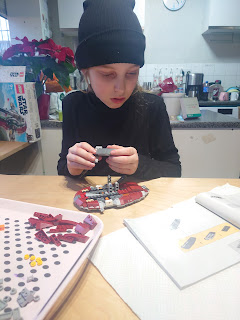How to make homemade playdoh.
Hey readers,
Playdough is a classic childhood favourite. It's a versatile, squishy, and colourful material that can provide hours of creative fun for kids (and adults!) of all ages.
The best part is that you can make your very own playdough right at home. In this blog post, we'll walk you through a simple and fun DIY playdough recipe that you can whip up in no time.
Ingredients You'll Need.
* 2 cups of all-purpose flour.
* 3/4 cup of salt.
* 4 teaspoons of cream of tartar.
* 2 cups of water.
* 2 tablespoons of vegetable oil.
* Food colouring (choose your favourite colours).
* A medium-sized saucepan.
* A mixing spoon.
* A stovetop.
Method.
1. Mixing the dry ingredients.
Begin by mixing the flour, salt, and cream of tartar in a medium-sized saucepan. Make sure you have a sturdy, heat-resistant spoon for this task.
2. Adding wet ingredients.
After the dry ingredients are well mixed, add the water and vegetable oil to the saucepan. Stir everything together until it forms a smooth, lump-free mixture.
3. Cooking the dough.
Place the saucepan on the stovetop over low-medium heat. Continue to stir the mixture constantly. The dough will start to thicken and pull away from the sides of the pan. This process typically takes 2-3 minutes.
4. Colouring your playdough.
Once the dough has come together, remove it from the heat and allow it to cool slightly. Now is the time to add some vibrant colours!
Create a small well in the centre of your dough and add a few drops of food colouring.
Fold and knead the dough until the colour is evenly distributed. Keep in mind that food colouring can be quite potent, so start with a few drops and add more if needed.
5. Store and play.
Allow your homemade playdough to cool completely before storing it in airtight containers or plastic bags. Make sure it's tightly sealed to keep the playdough fresh.
Congratulations! You've just created your very own batch of homemade playdough.
Not only is it a cost-effective alternative to store-bought playdough, but it's also an engaging DIY project to do with your children.
Tips and Tricks.
* If your playdough feels too sticky, you can knead in a bit more flour. Conversely, if it's too dry, add a small amount of water.
* Experiment with different colours and even add some glitter for extra sparkle.
* To keep your playdough fresh, store it in an airtight container or zip-lock bag. It can last for several weeks if properly stored.
* Playdough can be a fun tool for sensory play. Consider adding items like buttons, beads, or small toys to enhance the tactile experience.
* This DIY playdough recipe is non-toxic and safe for children, but always supervise young children during playtime.
Whether you're a parent looking for a creative activity to keep your kids engaged or an adult seeking a stress-relieving hobby, making homemade playdough is a delightful project that offers endless possibilities for imaginative play.
So, roll up your sleeves, get creative with colours, and enjoy the squishy, mouldable world of homemade playdough!
Cheers for reading X














